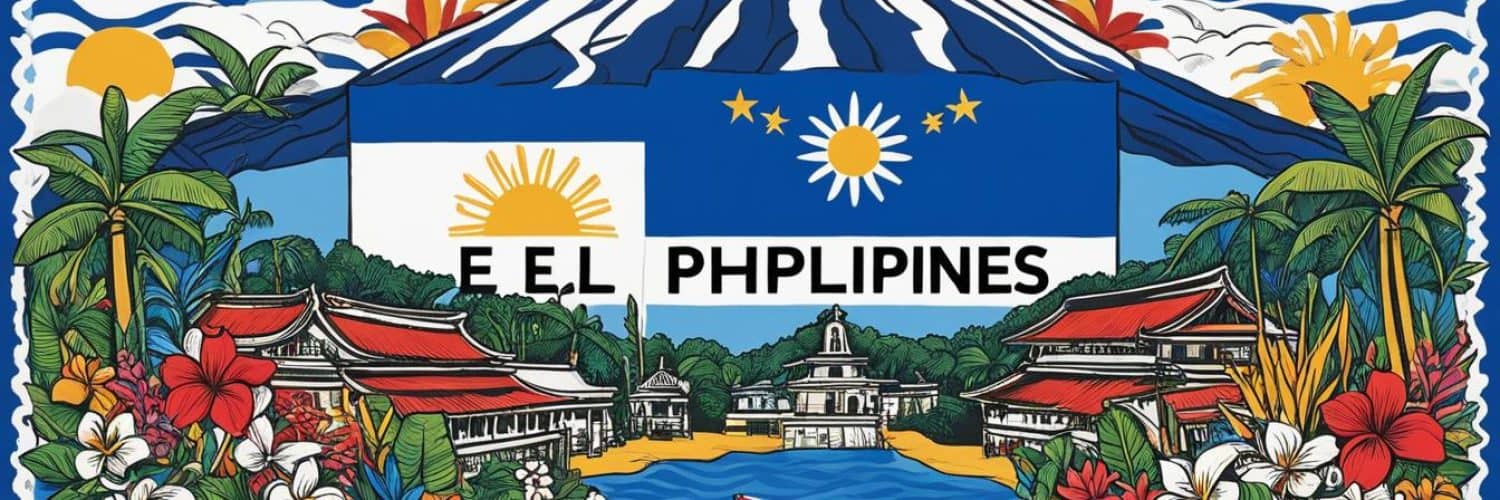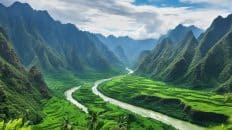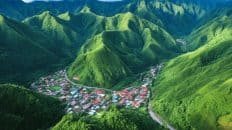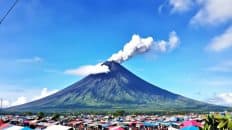Migration has shaped societies throughout history, and El Salvador and the Philippines are two countries with unique connections and shared experiences. According to the United Nations International Migration Report 2019, the number of international migrants is rapidly growing, with El Salvador and the Philippines being major contributors to this trend. Understanding the cultural, historical, and natural attractions of these countries is crucial for travelers looking to explore new destinations and appreciate the interconnectedness of the world.
Key Takeaways:
- El Salvador and the Philippines have a rich cultural heritage influenced by diverse traditions. (culture, traditions, customs)
- Both countries offer stunning coastlines and pristine beaches for beach lovers. (beaches, coastlines, beach activities)
- Exploring historical landmarks in El Salvador and the Philippines unveils their rich past. (history, historical sites, landmarks)
- Savoring traditional dishes is a must-do in both El Salvador and the Philippines. (cuisine, traditional food, local dishes)
- El Salvador and the Philippines have numerous must-visit destinations with unique attractions. (destinations, best places to visit, tourist attractions)
The Rich Cultures of El Salvador and the Philippines
Both El Salvador and the Philippines are home to vibrant and diverse cultures that are deeply rooted in their history and traditions. These countries offer a rich tapestry of customs, celebrations, and practices that are worth exploring.
El Salvador: In El Salvador, the culture is a unique blend of indigenous, European, and African influences. This multicultural heritage is evident in the country’s traditional music, dance, and cuisine. Salvadoran music is characterized by the sounds of marimba, guitar, and drums, creating lively and rhythmic melodies that reflect the country’s diverse cultural backgrounds. Traditional dances, such as the “Danza de los Diablitos” and the “Danza de los Historiantes,” tell captivating stories and showcase the artistry of Salvadoran performers. Food plays a central role in Salvadoran culture, with famous dishes like pupusas, a stuffed corn tortilla, and yuca con chicharrón, a hearty dish made with cassava and pork.
The Philippines: The Philippines, on the other hand, is renowned for its vibrant festivals and diverse customs. Each region in the Philippines has its own distinct celebrations, offering a glimpse into the country’s rich cultural heritage. From the colorful Ati-Atihan Festival in Kalibo to the grand Sinulog Festival in Cebu, these festivities showcase the Filipinos’ love for music, dance, and religious devotion. The traditional attire, such as the Barong Tagalog for men and the elegant Maria Clara dress for women, reflects the country’s Spanish colonial influences. Filipino cuisine is a fusion of various flavors, with popular dishes like adobo, a savory marinated meat dish, and halo-halo, a refreshing dessert made with mixed fruits, beans, and shaved ice.
Exploring the cultural practices and traditions of El Salvador and the Philippines is like embarking on a journey through time, experiencing the rich tapestry of their histories and the diversity of their customs. It is through these cultural exchanges that we gain a deeper understanding of our shared humanity and the beauty of our interconnected world.
Cultural Comparison: El Salvador vs. The Philippines
| El Salvador | The Philippines | |
|---|---|---|
| Music | Traditional music features marimba, guitar, and drums | Famous for folk songs, ballads, and indigenous music |
| Dance | Colorful folk dances like “Danza de los Diablitos” | Diverse range of traditional dances for different festivals |
| Cuisine | Traditional dishes include pupusas and yuca con chicharrón | Fusion of flavors in dishes like adobo and halo-halo |
| Attire | Influenced by indigenous, European, and African styles | Reflects Spanish colonial influences |
Through their vibrant cultures and rich traditions, El Salvador and the Philippines captivate and inspire travelers from around the world. Exploring these diverse cultures is not only a celebration of their unique identities but also an opportunity to foster a greater appreciation for the interconnectedness that unites us all.
Stunning Beaches in El Salvador and the Philippines
El Salvador and the Philippines are renowned for their stunning coastlines and picturesque beaches that captivate travelers from around the globe. Whether you seek thrilling water sports or simply want to bask in the beauty of the crystal-clear waters, these countries offer an array of beach destinations that cater to all preferences.
In El Salvador, the Pacific coastline is dotted with idyllic beach towns, including the renowned Playa El Tunco. This charming destination is famous for its world-class surfing waves, attracting surf enthusiasts from near and far. When you’re not catching waves, you can relax on the sandy shores and savor the laid-back atmosphere.
The Philippines, on the other hand, is home to some of the most breathtaking beaches in the world. Boracay, with its powdery white sand and vibrant nightlife, is a beloved vacation spot for beach lovers. Palawan, known for its magnificent limestone cliffs and hidden lagoons, offers a tranquil escape from the hustle and bustle of everyday life. And the island of Siargao is a paradise for surfers, with its legendary Cloud 9 wave and a vibrant beach community.
For beach enthusiasts, both El Salvador and the Philippines provide the perfect opportunity to indulge in a plethora of beach activities. From snorkeling in colorful coral reefs to diving into underwater worlds teeming with marine life, these destinations offer endless adventures for water sports enthusiasts. Beach hopping is also a popular activity, allowing visitors to explore the diverse coastlines and discover hidden gems along the way.
Whether you’re seeking thrilling water sports, serene beaches, or breathtaking vistas, El Salvador and the Philippines have it all. So pack your swimsuit, sunscreen, and sense of adventure, and get ready to experience the sublime beauty of their stunning coastlines.
Historical Wonders in El Salvador and the Philippines
El Salvador and the Philippines boast a rich historical heritage, with numerous landmarks and sites that showcase their past. These destinations offer a glimpse into the civilizations that once flourished in these lands, allowing visitors to connect with history and appreciate the cultural legacy they have inherited.
In El Salvador, the city of Suchitoto stands as a testament to the country’s colonial history. Its well-preserved Spanish architecture and cobblestone streets transport visitors back in time, offering a glimpse of the past. Exploring Suchitoto is like stepping into a living museum, where historic buildings and picturesque plazas tell stories of a bygone era.
“El Salvador’s colonial history comes alive in the enchanting city of Suchitoto.”
Another must-visit historical site in El Salvador is the Maya archaeological site of Joya de Cerén. Often referred to as the “Pompeii of the Americas,” this UNESCO World Heritage Site offers a unique opportunity to witness the remarkably preserved remains of an ancient Mayan farming village. Visitors can explore the excavated buildings and learn about the daily lives of the Mayan people who once inhabited this site.
Meanwhile, in the Philippines, history enthusiasts can immerse themselves in the rich heritage of the walled city of Intramuros in Manila. This historic district dates back to the Spanish colonial period and is home to well-preserved buildings, churches, and fortifications. Exploring Intramuros is like stepping into a different era, with cobblestone streets leading to significant landmarks such as the San Agustin Church and Fort Santiago.
“Explore the rich history of the Philippines as you stroll through the walls of Intramuros.”
The Philippines also boasts the world-famous Banaue Rice Terraces, a UNESCO-listed cultural landscape that showcases the engineering marvels of the indigenous Ifugao people. These terraces, carved into the mountainsides, are a testament to the ancient agricultural practices of the region and continue to be a source of livelihood for local communities.
These historical wonders in El Salvador and the Philippines are more than just tourist attractions; they are windows into the past, allowing visitors to appreciate the rich tapestry of history and culture that has shaped these nations.
Exploring the Local Cuisine in El Salvador and the Philippines
One of the best ways to experience the culture of a country is through its cuisine, and both El Salvador and the Philippines offer a wide array of delicious traditional dishes.
El Salvador is known for its mouth-watering pupusas, a corn tortilla stuffed with cheese, beans, or meat. These flavorful delights are often served with curtido, a tangy pickled cabbage, and salsa for an added kick. Pupusas are a staple in El Salvadorian cuisine and a must-try for anyone visiting the country.
Meanwhile, the Philippines is renowned for its diverse range of dishes that tantalize the taste buds. Filipino cuisine is full of enticing flavors, such as adobo, a dish featuring marinated meat in a savory blend of soy sauce, vinegar, and spices. Sinigang, a tamarind-based sour soup, is a beloved comfort food, while lechon, a whole roasted pig, is a centerpiece during special occasions and celebrations.
Exploring the local street food scenes in both El Salvador and the Philippines is an adventure in itself. From mouthwatering empanadas and pastelitos to grilled seafood skewers and halo-halo, a refreshing shaved ice dessert, there’s something to satisfy every food enthusiast’s cravings.
“Food is a universal language that connects people. El Salvador and the Philippines may be miles apart, but their cuisines bring us together in a celebration of flavors and cultures.”
Ready to tantalize your taste buds? Take a look at the table below for some highlights of the traditional dishes from El Salvador and the Philippines:
| Country | Traditional Dish | Description |
|---|---|---|
| El Salvador | Pupusas | A corn tortilla stuffed with cheese, beans, or meat, often served with curtido and salsa. |
| El Salvador | Tamales | Corn dough filled with seasoned meat, wrapped in banana leaves, and steamed to perfection. |
| Philippines | Adobo | Marinated meat (usually pork or chicken) cooked in a mixture of soy sauce, vinegar, garlic, and spices. |
| Philippines | Sinigang | A sour soup made with tamarind, vegetables, and meat or seafood, creating a perfect harmony of flavors. |
| Philippines | Halo-Halo | A refreshing dessert made with shaved ice, various sweet ingredients, and topped with evaporated milk and leche flan. |
These are just a few examples of the delectable dishes awaiting you in El Salvador and the Philippines. So don’t be shy – venture out and savor the authentic flavors of these countries, allowing your taste buds to dance with delight.
Must-Visit Destinations in El Salvador
El Salvador offers a range of must-visit destinations for travelers. Whether you’re a history buff, nature lover, or simply seeking a charming getaway, this country has something to offer everyone. From colonial towns to national parks, here are some of the best places to visit in El Salvador:
1. Suchitoto
A picturesque colonial town nestled near Lake Suchitlán, Suchitoto is a top destination for those seeking history and natural beauty. Stroll through its cobblestone streets, admire the well-preserved Spanish architecture, and soak in the breathtaking views of the lake. Suchitoto also hosts various festivals and cultural events throughout the year, offering visitors a chance to immerse themselves in the local traditions.
2. Ruta de las Flores
For nature enthusiasts, the Ruta de las Flores is a must-see. This scenic route winds through the charming towns of Apaneca, Ataco, and Juayúa, surrounded by lush coffee plantations and beautiful mountain landscapes. Take a leisurely stroll through colorful markets, explore the vibrant street art, and indulge in local cuisine. Don’t forget to visit the stunning waterfalls and hot springs in the area.
3. El Imposible National Park
El Imposible National Park is a paradise for hikers and wildlife enthusiasts. This protected reserve is home to diverse ecosystems, including dense forests, rivers, and cascading waterfalls. Embark on a thrilling hike through the park’s winding trails, and keep an eye out for rare bird species, monkeys, and other wildlife. The park also offers breathtaking viewpoints where you can marvel at the natural beauty of El Salvador.
4. Joya de Cerén Archaeological Site
Step back in time at the Joya de Cerén Archaeological Site, often referred to as the “Pompeii of the Americas.” This UNESCO World Heritage Site offers a fascinating glimpse into the daily life of the ancient Maya civilization. Explore the remarkably preserved ruins of houses, workshops, and temples to gain a deeper understanding of this ancient culture and its agricultural practices.
5. Montecristo National Park
If you’re a nature lover and enjoy the thrill of exploring untouched wilderness, Montecristo National Park is a must-visit. This pristine cloud forest is located on the borders of El Salvador, Guatemala, and Honduras, offering a unique biodiversity hotspot. Embark on a guided hike through the dense forest and encounter exotic flora and fauna, including toucans, howler monkeys, and colorful orchids.
| Destination | Highlights |
|---|---|
| Suchitoto | Colonial charm, stunning lake views, festivals |
| Ruta de las Flores | Scenic route, charming towns, coffee plantations |
| El Imposible National Park | Hiking, wildlife spotting, beautiful landscapes |
| Joya de Cerén Archaeological Site | Ancient Maya ruins, preserved houses, UNESCO World Heritage Site |
| Montecristo National Park | Pristine cloud forest, diverse flora and fauna |
These destinations showcase the diverse beauty and rich history of El Salvador. Whether you’re interested in exploring ancient ruins, hiking in national parks, or immersing yourself in colonial charm, El Salvador has it all. Plan your trip to these must-visit destinations and discover the hidden gems of this Central American gem.
Top Attractions in the Philippines
The Philippines is a diverse and captivating destination that offers a multitude of attractions for every type of traveler. From stunning beaches and historical sites to natural landmarks and vibrant cities, there is something for everyone to enjoy. Here are some of the top attractions that should be on your list when visiting the Philippines:
Boracay
Boracay is a world-renowned island known for its pristine white sandy beaches and lively nightlife. It is the perfect destination for beach lovers and party enthusiasts, with a wide range of water sports and activities to indulge in.
Palawan
Palawan is often hailed as one of the most beautiful islands in the world. It is home to the mesmerizing Underground River, a UNESCO World Heritage Site, where you can embark on a boat tour through an underground cave system. Palawan is also famous for its breathtaking landscapes, crystal-clear waters, and rich marine biodiversity, making it a paradise for nature lovers and divers.
Cebu
Cebu is a bustling province that combines rich historical sites with vibrant city life. Explore the historic sites of Magellan’s Cross and Fort San Pedro in Cebu City, or venture to the nearby island of Mactan, where you can discover more about the country’s colonial past.
Siargao
Siargao is known as the surfing capital of the Philippines, attracting surfers from around the world with its famous Cloud 9 wave. The island also offers stunning beaches, lagoons, and a laid-back atmosphere, making it an ideal destination for those seeking relaxation and adventure.
Bohol’s Chocolate Hills
Bohol’s Chocolate Hills is a unique geological formation consisting of thousands of grassy hills that turn chocolate brown during the dry season. This natural wonder offers a breathtaking view and is a must-visit landmark in the Philippines.
Banaue Rice Terraces
The Banaue Rice Terraces are an iconic cultural landscape that showcases the ingenuity and agricultural traditions of the indigenous Ifugao people. These ancient rice terraces are often referred to as the “Eighth Wonder of the World” and provide a glimpse into the country’s rich cultural heritage.
Exploring these top attractions in the Philippines is a journey of discovery, offering a mix of natural beauty, cultural heritage, and unforgettable experiences. Whether you’re looking for beach relaxation, adventure, or cultural immersion, the Philippines has it all.
Travel Tips for Exploring El Salvador and the Philippines
Before embarking on a journey to El Salvador or the Philippines, it is essential to be well-prepared. Researching the local customs, traditions, and cultural practices will not only show respect but also help you avoid cultural misunderstandings. Here are some travel tips to ensure a smooth and enjoyable experience:
- Check travel advisories: Stay updated with the latest travel advisories for El Salvador and the Philippines. Keep in mind any safety or security concerns before finalizing your travel plans.
- Visas and vaccinations: Make sure you have the necessary visas for entry into both countries. Additionally, check the recommended vaccinations and consult with your healthcare provider well in advance.
- Pack appropriate clothing: Consider the climate and season when packing your clothes. El Salvador and the Philippines have diverse weather patterns, so pack accordingly to stay comfortable during your trip.
- Transportation options: Familiarize yourself with the local transportation options in each country. Research public transport, ride-sharing services, and consider renting a car if necessary.
- Learn basic phrases: While English is widely spoken in both El Salvador and the Philippines, knowing a few basic phrases in the local language can go a long way in facilitating communication and showing respect to the locals.
By being well-informed and prepared, you can make the most of your journey to El Salvador and the Philippines, ensuring a memorable and rewarding travel experience.
Sustainable Tourism in El Salvador and the Philippines
Both El Salvador and the Philippines are committed to promoting sustainable tourism practices that prioritize the preservation of their natural environments and cultural heritage. With a shared goal of protecting these precious assets, responsible travelers have the power to make a positive impact by embracing eco-friendly travel options and supporting local conservation efforts.
Responsible Accommodations
When planning a trip to El Salvador or the Philippines, choosing eco-friendly accommodations is a significant step towards sustainable tourism. Look for hotels and resorts that prioritize energy and water conservation, waste management, and eco-friendly practices. By opting for sustainable accommodations, you contribute to the preservation of the natural surroundings and support businesses that align with environmental values.
Community-Based Tourism Initiatives
Engaging in community-based tourism initiatives is another way to support sustainable practices in El Salvador and the Philippines. These initiatives provide opportunities to directly connect with local communities, learn about their traditional ways of life, and contribute to their economic well-being. Whether it’s participating in cultural exchanges, volunteering, or supporting local artisans, these experiences create a positive impact on both travelers and the communities they visit.
Respecting Local Ecosystems
The natural beauty of El Salvador and the Philippines is a testament to their unique ecosystems. As a responsible traveler, it’s essential to respect and protect these environments. Follow designated trails, avoid littering, and refrain from damaging coral reefs or marine life while snorkeling or diving. By preserving the integrity of these ecosystems, you help ensure their longevity and enable future generations to enjoy their wonders.
Participating in Conservation Projects
Getting involved in conservation projects and beach cleanups is a proactive way to contribute to the sustainability of El Salvador and the Philippines. Many organizations and local communities organize initiatives focused on protecting marine life, reforestation, and preserving natural habitats. By joining these efforts, you actively contribute to the well-being of the destinations you visit and help combat climate change.
| Ways to Support Sustainable Tourism in El Salvador and the Philippines |
|---|
| Choose eco-friendly accommodations |
| Engage in community-based tourism initiatives |
| Respect local ecosystems |
| Participate in conservation projects |
By practicing sustainable tourism in El Salvador and the Philippines, visitors play a crucial role in safeguarding the beauty and uniqueness of these destinations for future generations. Through conscious choices and meaningful actions, we can contribute to a more sustainable and responsible travel industry.
The Interconnectedness of El Salvador and the Philippines
Exploring the connections between El Salvador and the Philippines reveals the interconnectedness of our world. Both countries have experienced migration, historical influences, and cultural exchanges that have shaped their identities. By recognizing these shared experiences, travelers can cultivate a sense of global citizenship and foster understanding among different cultures. The connections between El Salvador and the Philippines remind us that despite geographical distances, we are all connected and have much to learn from each other.
Conclusion
Exploring the unique ties between El Salvador and the Philippines offers an enriching cultural exploration. These two countries have so much to offer travelers – from their rich cultures and stunning beaches to their historical wonders and delicious cuisines. By delving into the interconnectedness of these destinations and embracing sustainable tourism practices, visitors can gain a deeper appreciation for the beauty and diversity of our world.
Whether it’s savoring traditional dishes like pupusas in El Salvador or adobo in the Philippines, learning about the historical landmarks like the Joya de Cerén archaeological site or the Banaue Rice Terraces, or simply enjoying the breathtaking scenery in both countries, a journey to El Salvador and the Philippines is an opportunity for discovery and connection.
As travelers, we can strive to be global citizens, recognizing the shared experiences and connections between different cultures. The ties between El Salvador and the Philippines remind us that despite geographical distances, our world is interconnected. By immersing ourselves in the local traditions, exploring the natural wonders, and supporting sustainable tourism practices, we can contribute to the preservation of these beautiful destinations for future generations.
FAQ
What are the main attractions of El Salvador and the Philippines?
El Salvador and the Philippines offer a wide range of attractions, including stunning beaches, rich cultural traditions, historical landmarks, and delicious cuisine.
What are some popular beach destinations in El Salvador and the Philippines?
El Salvador’s Playa El Tunco and the Philippines’ Boracay, Palawan, and Siargao are renowned for their picturesque coastlines and crystal-clear waters.
What historical sites should I visit in El Salvador and the Philippines?
El Salvador’s Suchitoto and Joya de Cerén, as well as the Philippines’ Intramuros and Banaue Rice Terraces, offer glimpses into the countries’ rich histories.
What are some traditional dishes I should try in El Salvador and the Philippines?
El Salvador’s pupusas and the Philippines’ adobo, sinigang, and lechon are must-try dishes that showcase the unique flavors of each country.
What are some must-visit destinations in El Salvador?
Suchitoto, Ruta de las Flores, El Imposible National Park, Montecristo National Park, and the Joya de Cerén archaeological site are among the top destinations in El Salvador.
What are some of the top attractions in the Philippines?
Boracay, Palawan’s Underground River, Cebu’s historical sites, Siargao’s surfing spots, Bohol’s Chocolate Hills, and the Banaue Rice Terraces are some of the Philippines’ top attractions.
What travel tips should I keep in mind when exploring El Salvador and the Philippines?
Research the local customs and traditions, check travel advisories, ensure necessary visas and vaccinations, pack appropriate clothing, consider local transportation options, and learn a few basic phrases in the local language.
How can I support sustainable tourism in El Salvador and the Philippines?
Choose eco-friendly accommodations, engage in community-based tourism initiatives, respect the local ecosystems, and participate in beach cleanups and conservation projects.
How are El Salvador and the Philippines interconnected?
Both countries have experienced migration, historical influences, and cultural exchanges that have shaped their identities, reminding us of the interconnectedness of the world.


















Add comment